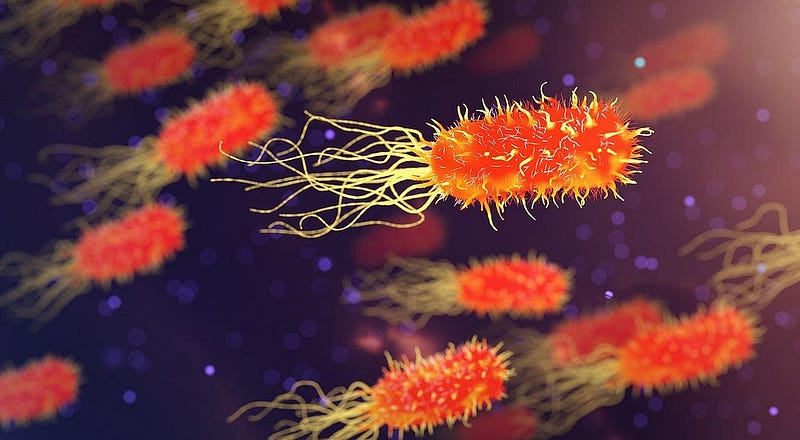The Return of the Black Death: A Closer Look at Modern Threats
Written on
Chapter 1: Understanding the Threat
The Bubonic Plague, often referred to as the Black Death, has plagued humanity for centuries. Its alarming return could be nearer than many realize. This ancient illness, caused by the bacterium Yersinia pestis, has evolved and now presents a renewed risk to global health. In this exploration, we will examine the various forms of the Plague, its historical context, recent updates, and the potential implications for biowarfare.
This serves as a grim reminder of the ongoing struggle between infectious diseases and modern medicine.
Section 1.1: Variants of the Plague
Bubonic Plague
The Bubonic Plague is the most notorious variant, known for its horrific symptoms. This form occurs when Yersinia pestis infiltrates the lymphatic system, leading to its reproduction and accumulation in the lymph nodes. The resultant swelling, primarily in the groin or armpit, creates painful buboes. The characteristic blackening of the extremities, giving the disease its dreadful name, results from tissue damage and necrosis. Despite the existence of treatment options, the Bubonic Plague has a mortality rate ranging from 1% to 15% among those infected.

Septicemic Plague
When Y. pestis enters the bloodstream, the situation worsens significantly. As the bacteria multiply, the immune response may trigger clotting in the arteries, resulting in circulation problems and, in severe cases, cardiac arrest. Symptoms can include coughing and vomiting blood due to vessel rupture. Even with treatment, the survival rate for septicemic plague remains around 60%.
Pneumonic Plague
Pneumonic Plague represents the most lethal form of the disease. This variant specifically attacks the lungs, allowing the bacteria to breach the esophagus and bronchial linings. This leads to a severe cough that aerosolizes numerous bacteria, making it easy to spread to others. The prognosis for those infected with pneumonic plague is dire, with nearly 100% fatality within a brief infection period of just 1 to 3 days. Alarmingly, individuals can transmit the disease before exhibiting any symptoms, complicating containment efforts.
Section 1.2: Historical Context of Plague Outbreaks
The shadow of the Plague looms large in human history. Evidence of Y. pestis dates back over 3,800 years, with genetic material traced to the Bronze Age. Three significant historical outbreaks have stemmed from this single bacterium.
#### The Justinian Plague
Thought to have originated in India, the Justinian Plague reached Constantinople around 541 C.E. It spread throughout the Mediterranean, affecting Persia between 541 and 750 C.E., resulting in 18 outbreaks over 200 years. This devastating pandemic is estimated to have claimed between 15 and 100 million lives, decimating 25% to 50% of the affected populations.

#### The Black Death
Introduced to Europe via ships carrying rats infested with plague-infected fleas, the Black Death swiftly spread across the continent. During its initial outbreak, it is estimated to have killed at least one-third of Europe's population. Although improvements in sanitation and healthcare have mitigated the risk, the threat of resurgence remains.
#### The Yunnan Plague
The Yunnan Plague saw localized outbreaks in the Yunnan Province from 1772 to 1855. However, in the late 19th century, it began expanding across Asia, ultimately causing around 70,000 deaths as it reached Hong Kong and spread worldwide through trade routes. While large outbreaks have become infrequent, the plague persisted until 1950, raising concerns about its potential return.
Chapter 2: Modern Developments and Risks
The first video, "The Coming Psychological Black Death," delves into the mental health implications of the plague's resurgence, discussing how society grapples with the historical and ongoing threat of infectious diseases.
The second video, "The Return of the Black Death: VICE Reports (Full Length)," provides an in-depth report on the current state of plague outbreaks and the challenges posed by antibiotic resistance.
Recent Developments and Challenges
Recent findings concerning the Plague are alarming. Strains of Y. pestis exhibiting high antibiotic resistance have been identified, particularly in Madagascar. This newfound resistance poses a serious challenge, allowing the bacteria to thrive despite medical interventions. The emergence of these resistant strains in flea digestive tracts, common carriers of the disease, heightens the risk of widespread infections and spontaneous outbreaks.
Bio-Warfare Concerns
Another significant issue is the potential use of Y. pestis, either in its natural form or genetically engineered, as a biological weapon. The high fatality rate of pneumonic plague makes it an attractive option for those seeking to create aerosolized bioweapons. Although the Geneva Convention prohibits the use of biological weapons except in retaliation, the risk of both accidental and intentional misuse of the Plague for warfare continues to grow in our interconnected world.
Global Response and Preparedness
As the potential return of the Black Death looms, global preparedness is essential. Collaboration among international organizations, governments, and healthcare systems is critical to monitor and respond to potential outbreaks. Increased research into antibiotic treatments, particularly for resistant strains, is vital, as is cooperation in preventing the misuse of Y. pestis in biological warfare.
Final Thoughts
While the prospect of the Black Death's resurgence is unsettling, it is important to acknowledge the advancements in modern medicine and science in combating infectious diseases. Although bacterial adaptation and antibiotic resistance present challenges, the scientific and medical communities remain dedicated to finding solutions. The ongoing battle for human health is a testament to our resilience against microscopic threats. As we face the future, vigilance and preparedness will be key to ensuring that the Black Death remains a part of history rather than a contemporary crisis. We must recognize the enduring significance of this ancient adversary and be ready to confront it with the full strength of modern science and medicine.